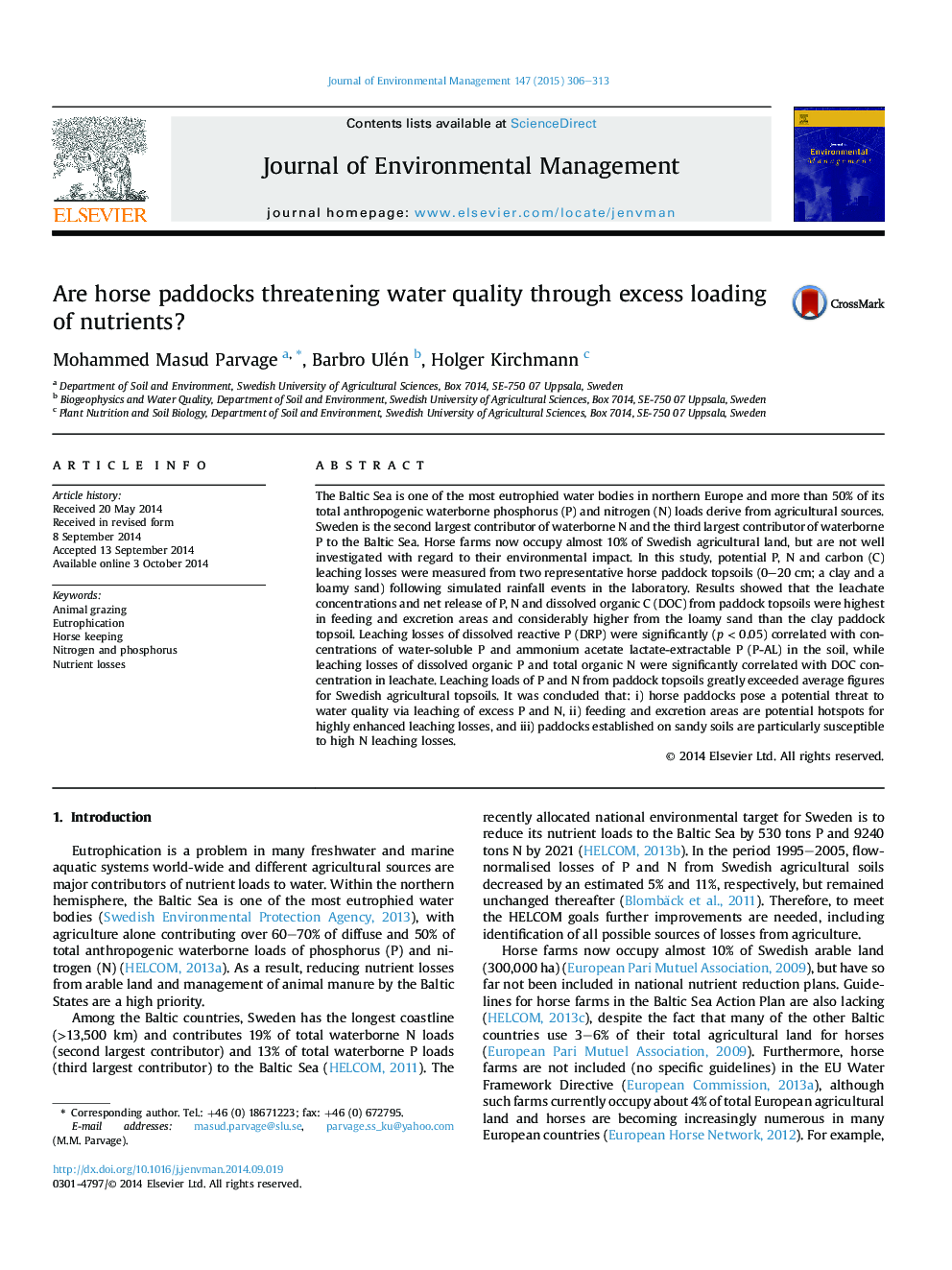| کد مقاله | کد نشریه | سال انتشار | مقاله انگلیسی | نسخه تمام متن |
|---|---|---|---|---|
| 1055673 | 1485265 | 2015 | 8 صفحه PDF | دانلود رایگان |
• Leaching losses of nutrients to waters from horse paddocks is an ignored problem.
• Rain simulation experiments demonstrated a high potential for such losses.
• Potential phosphorus leaching was up to 3 times higher than from a reference area.
• Potential nitrogen leaching was up to 15 times higher than from a reference area.
The Baltic Sea is one of the most eutrophied water bodies in northern Europe and more than 50% of its total anthropogenic waterborne phosphorus (P) and nitrogen (N) loads derive from agricultural sources. Sweden is the second largest contributor of waterborne N and the third largest contributor of waterborne P to the Baltic Sea. Horse farms now occupy almost 10% of Swedish agricultural land, but are not well investigated with regard to their environmental impact. In this study, potential P, N and carbon (C) leaching losses were measured from two representative horse paddock topsoils (0–20 cm; a clay and a loamy sand) following simulated rainfall events in the laboratory. Results showed that the leachate concentrations and net release of P, N and dissolved organic C (DOC) from paddock topsoils were highest in feeding and excretion areas and considerably higher from the loamy sand than the clay paddock topsoil. Leaching losses of dissolved reactive P (DRP) were significantly (p < 0.05) correlated with concentrations of water-soluble P and ammonium acetate lactate-extractable P (P-AL) in the soil, while leaching losses of dissolved organic P and total organic N were significantly correlated with DOC concentration in leachate. Leaching loads of P and N from paddock topsoils greatly exceeded average figures for Swedish agricultural topsoils. It was concluded that: i) horse paddocks pose a potential threat to water quality via leaching of excess P and N, ii) feeding and excretion areas are potential hotspots for highly enhanced leaching losses, and iii) paddocks established on sandy soils are particularly susceptible to high N leaching losses.
Journal: Journal of Environmental Management - Volume 147, 1 January 2015, Pages 306–313
